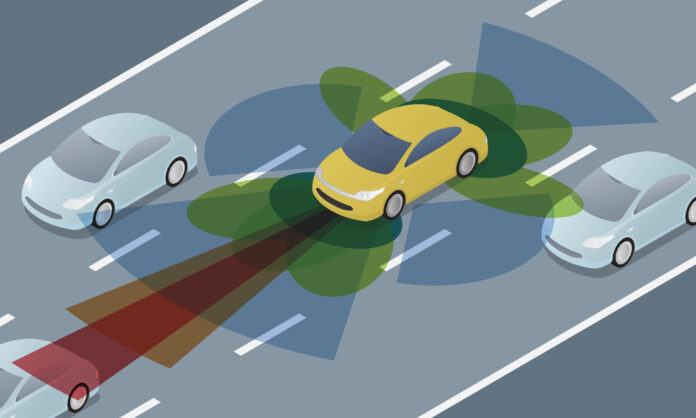
The automotive industry is in the midst of a technological revolution that promises to reshape the way we travel. Advanced Driver Assistance Systems (ADAS) have emerged as a crucial stepping stone on the path to fully autonomous vehicles. In this article, we’ll explore how ADAS is paving the way for the future of transportation.
Understanding ADAS
Advanced Driver Assistance Systems, or ADAS, represent a suite of technologies and features designed to assist drivers and enhance vehicle safety. While ADAS doesn’t make a vehicle fully autonomous, it acts as a bridge between traditional driving and self-driving cars. These systems use a combination of sensors, cameras, radar, and artificial intelligence to provide various levels of automation and support to drivers.
The 5 Building Blocks of ADAS
ADAS comprises several key components that collectively create a safer and more convenient driving experience:
- Adaptive Cruise Control (ACC): ACC maintains a safe following distance from the vehicle ahead, adjusting the vehicle’s speed as needed. This feature can significantly reduce driver fatigue during long trips.
- Lane Keeping Assist (LKA): LKA helps drivers stay within their lane by providing gentle steering inputs or warnings when they unintentionally drift out of the lane.
- Automatic Emergency Braking (AEB): AEB detects impending collisions and automatically applies the brakes if the driver doesn’t react in time, reducing the severity of accidents or preventing them altogether.
- Blind Spot Monitoring (BSM): BSM uses sensors to monitor blind spots and provides visual or auditory alerts when a vehicle is detected in these areas, aiding in safe lane changes.
- Traffic Sign Recognition (TSR): TSR reads and displays road signs, such as speed limits and stop signs, on the vehicle’s dashboard, helping drivers stay informed about traffic regulations.
The Road to Autonomy
While fully autonomous vehicles (often referred to as self-driving or driverless cars) remain the ultimate goal, ADAS plays a pivotal role in gradually introducing automation into the driving experience. The levels of automation are typically categorized from Level 0 (no automation) to Level 5 (full automation). ADAS falls within Levels 1 to 2, offering features like adaptive cruise control and lane-keeping assistance.
Three Benefits of ADAS on the Path to Autonomy
ADAS brings numerous advantages to the table as we move toward autonomous vehicles:
1. Regulatory Hurdles
Complex Regulations: Achieving full autonomy involves complex legal and regulatory considerations. Governments around the world are actively working on developing comprehensive regulations and standards for autonomous vehicles. These regulations encompass aspects such as safety requirements, liability, and licensing for autonomous systems.
Varied Approaches: Different regions may adopt varying approaches to autonomous vehicle regulations. This can create challenges for manufacturers and technology developers aiming for global markets, as they must navigate a patchwork of regulations and compliance requirements.
Testing and Validation: One of the regulatory hurdles is establishing standardized testing and validation procedures to ensure the safety and reliability of ADAS and autonomous systems. Proving the effectiveness and safety of these technologies is paramount for regulatory approval.
2. Infrastructure Requirements
Smart Roads: The successful deployment of autonomous vehicles relies on the existence of smart road infrastructure. These advanced roads are equipped with sensors, communication networks, and traffic management systems that can seamlessly interact with autonomous vehicles. Building and retrofitting roads to meet these requirements can be a significant undertaking for governments and municipalities.
Communication Networks: Autonomous vehicles depend on high-speed and low-latency communication networks to exchange data with infrastructure and other vehicles. The development and maintenance of robust communication networks, including 5G technology, are crucial for enabling safe and efficient autonomous driving.
Mapping and Localization: To navigate autonomously, vehicles require highly detailed and up-to-date maps for precise localization. Building and maintaining such mapping databases is an ongoing challenge, as road conditions and infrastructure are constantly changing.
3. Cybersecurity
Connected Vulnerabilities: As vehicles become increasingly connected to the internet and each other, they also become vulnerable to cybersecurity threats. Hackers may attempt to gain unauthorized access to a vehicle’s systems, potentially compromising safety and privacy.
Data Protection: ADAS and autonomous vehicles generate and rely on vast amounts of data. Protecting this data from theft or manipulation is a critical concern. Comprehensive data encryption and secure data transmission protocols are essential to safeguard sensitive information.
Software Security: Autonomous vehicles rely on complex software systems, making them susceptible to software vulnerabilities. Regular software updates and security patches are necessary to address emerging threats.
4. Ethical and Social Considerations
Decision-Making Algorithms: Autonomous vehicles need to make split-second decisions in potentially life-threatening situations. Developers must grapple with ethical dilemmas, such as how these algorithms should prioritize the safety of occupants versus pedestrians or cyclists.
Job Displacement: The widespread adoption of autonomous vehicles could disrupt industries reliant on human drivers, such as trucking and taxi services. Preparing for potential job displacement and workforce transitions is an important societal consideration.
5. Public Acceptance:
Trust and Education: Building public trust in autonomous technology is essential. Many individuals may be wary of fully autonomous vehicles due to safety concerns or a lack of understanding. Public education campaigns and transparent communication from manufacturers and regulators can help address these challenges.
When Will we See Fully Autonomous Vehicles?
Advanced Driver Assistance Systems (ADAS) are transforming the way we drive and gradually paving the way for fully autonomous vehicles. While we’re not yet at the point of driverless cars dominating our roads, ADAS is a significant leap toward that future. As technology continues to advance and regulations catch up, we can expect to see even more automation in our vehicles, making transportation safer, more convenient, and ultimately, more autonomous.
The journey toward fully autonomous vehicles is an exciting one, but it’s important to remember that it’s not a matter of “if” but “when.” While we’ve made remarkable strides in ADAS technology, achieving full autonomy involves addressing several complex challenges.
Despite these challenges, the future of autonomous driving looks promising. As technology continues to evolve, and as stakeholders collaborate to address these issues, we’ll move closer to a world where fully autonomous vehicles are a reality. When that day comes, transportation will be safer, more efficient, and more accessible than ever before.
So, when will we see fully autonomous vehicles dominating our roads? While we can’t pinpoint an exact date, we can confidently say that the journey has begun, and we’re making steady progress toward a future where self-driving cars are part of our everyday lives.




